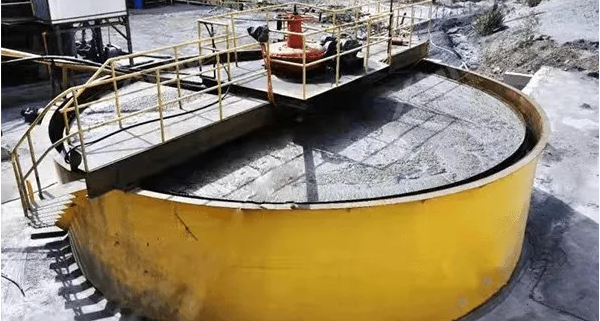This paper recommends a new model for treating tailings.
As a new tailing treatment mode, dry stacking uses large-scale dehydration equipment to process tailings slurry discharged from ore dressing into the stirring tank for buffering. After pumping the tailings slurry to the dehydration workshop with the slurry, and fully pressing it into dry material, it has a concentration of more than 80% and a water content of only about 20%. A belt conveyor transports it to the dry tailings yard, where it is stacked in layers. Dehydration technologies for tailings dry stacking are discussed in this article.
1. Process flow of cyclone-thickener-filter dry stack.
Due to its simple structure, low cost, small footprint, large processing capacity, and high underflow concentration, the cyclone is used in tailings concentration and dehydration processes. However, it is difficult to obtain clarified overflow by using hydro cyclone alone; gravity sedimentation can be combined with centrifugal sedimentation to combine the advantages of both, which can not only increase tailings concentration efficiency but also ensure clarified overflow.
2. Process flow of cyclone-thickener-press filter dry pile.
In this process flow, the tailings produced by mineral processing are fed into the cyclone through the pump, the cyclone is fed into the horizontal belt vacuum filter for dehydration, and the overflow of the cyclone is fed into the deep cone thickener; the underflow of the thickener is fed into The vertical filter press is dehydrated, the overflow of the thickener, the filtrate of the horizontal belt vacuum filter and the vertical filter press are combined and returned to the production circulating water system, and the moisture of the final product tailings filter cake is less than 20%.
As a result of the limited capacity of the filter, this process is suitable for storing tailings from small concentrators in dry form.
3. Process flow of thickener-cyclone-filter dry stack.
The characteristics of this process are: the ore dressing production tailings are fed into peripheral transmission thickeners or inclined plate thickeners, the underflow of the thickener is fed into the cyclone, and the sand settling from the cyclone is fed into the horizontal belt vacuum filter for dehydration and the cyclone. A closed circuit is formed by combining the overflow and filtrate of the filter and returning it to the thickener feed. Overflow from the thickener is clarified water, which is returned to the production circulating water system; the filter cake of the final product filter has less than 20% moisture.
Dasen Mining Equipment Co., Ltd. manufactures industrial equipment for the sand and gravel aggregate industry. In addition to providing environmental protection, energy savings, safety, and high-efficiency overall solutions, it also offers new single-stage hammer crushers. We help our clients achieve sustainable profitability and performance by leveraging our knowledge, people, and solutions.


